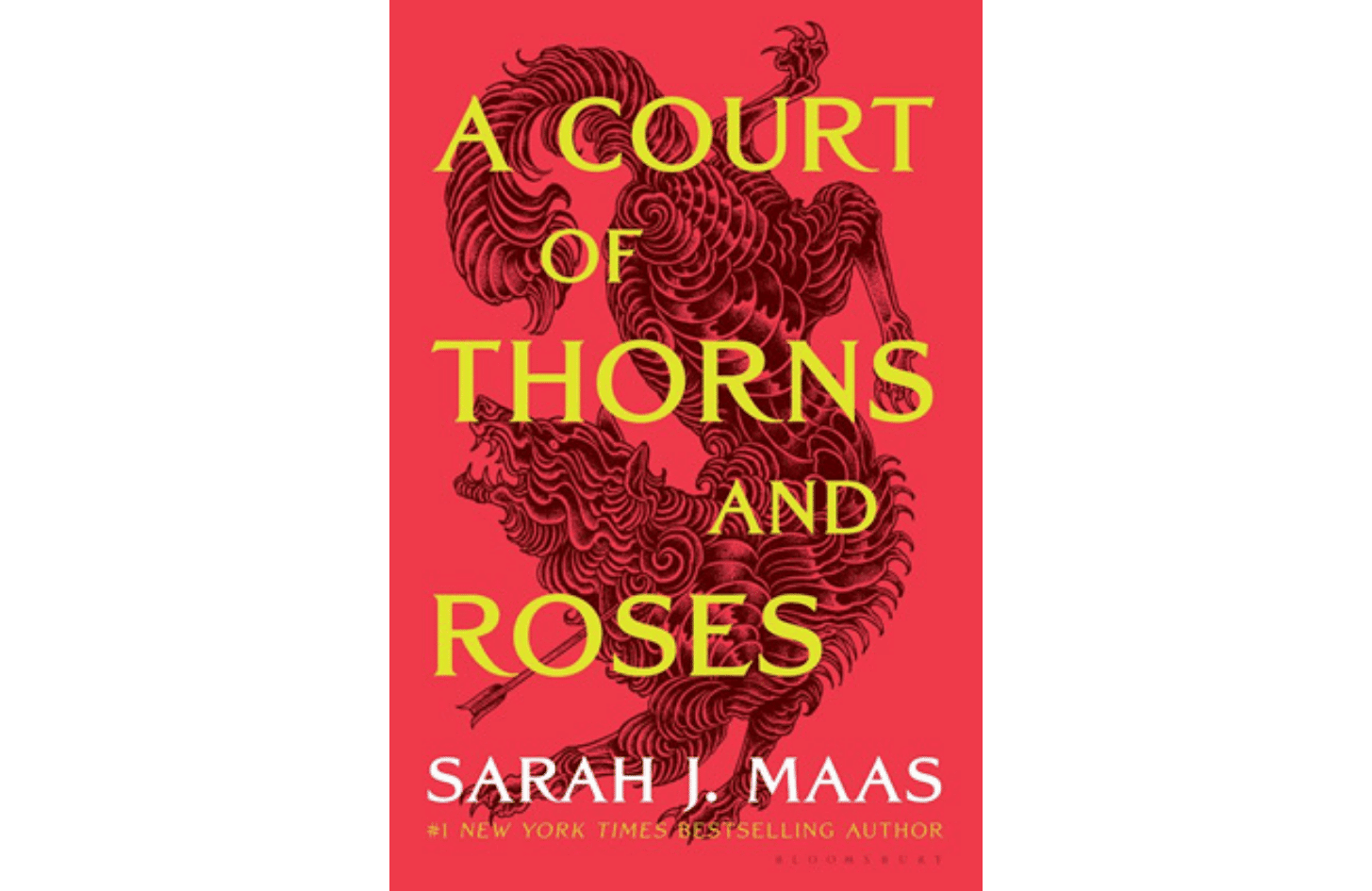
In a world where beauty hides monstrous secrets and love blooms from the darkest of places, Sarah J. Maas weaves a tale of magic, passion, and self-discovery in A Court of Thorns and Roses.
A loose retelling of the classic “Beauty and the Beast” story, ACOTAR delves deep into the lives of Feyre, a mortal girl, and Tamlin, a High Fae lord, as they navigate their way through a land cursed with darkness.
However, beneath its enchanting surface, the book reveals flaws that have stirred up a whirlwind of mixed feelings and heated debates among readers.
Despite its potential, A Court of Thorns and Roses has been criticized for its inconsistent character development, problematic relationships, and lackluster world-building.
While some readers enjoyed the story’s premise and a few standout characters, for others, it was a deal breaker.
Join me as I critically examine the elements that have made ACOTAR such a divisive read.
I’ll focus on the following elements:
- Plot
- Theme
- Characters
- Symbolism
- Narrative style
- Writing sins 👿
- My honest thoughts on book 🧝
- Quotes ✍️
- List of spicy chapters 🌶️📖
- Books to read next if you liked ACOTAR 🥰
- Fantasy books similar to ACOTAR but with more spice 🌶️🌶️🌶️
A Court of Thorns and Roses summary
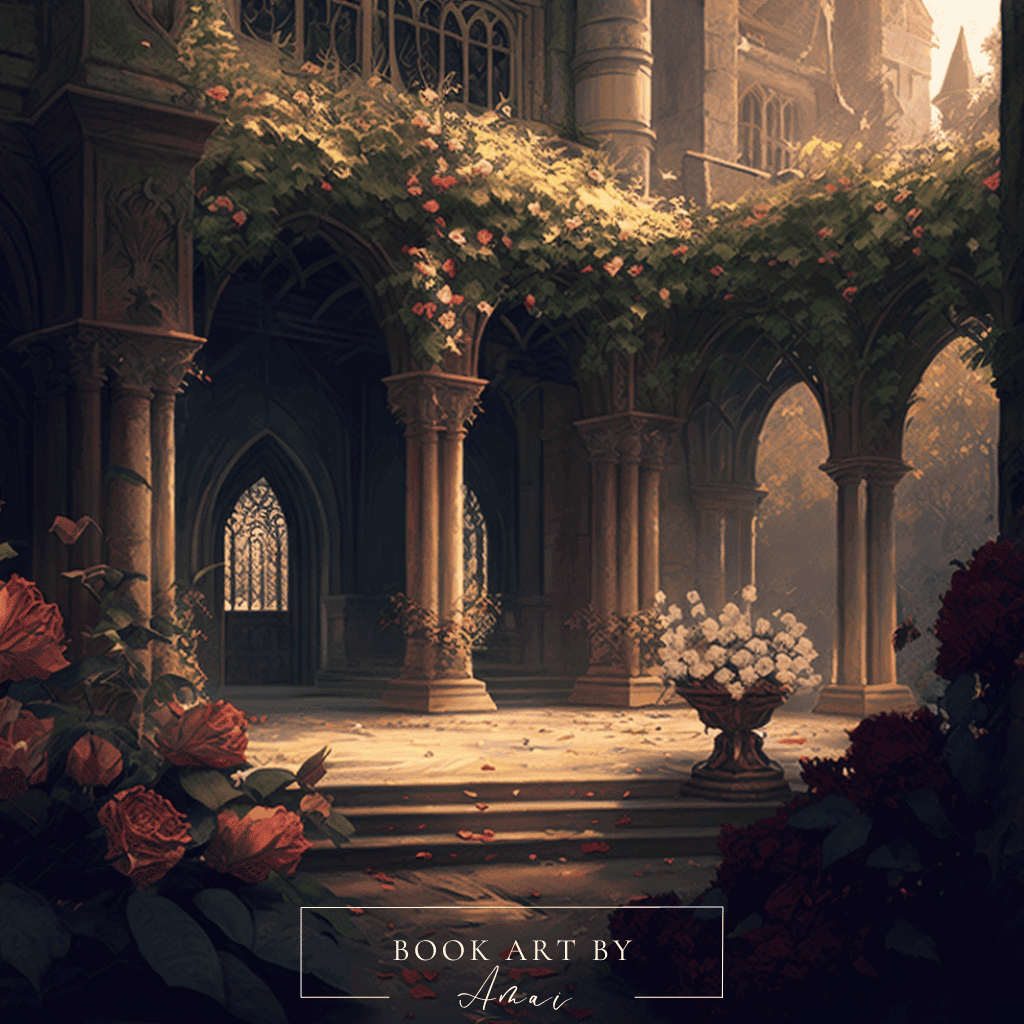
Book art by @BookArtbyAmai on Instagram
A Court of Thorns and Roses follows Feyre Archeron, a young human huntress struggling to provide for her impoverished family.
After killing a wolf that turns out to be a Fae in disguise, Feyre is taken captive by a High Fae named Tamlin as retribution for her actions. Brought to the magical realm of Prythian, Feyre finds herself in the midst of a growing conflict and a deadly curse.
As Feyre spends more time in Prythian, she becomes entangled in the complex world of Fae politics, relationships, and dangerous powers. As her feelings for Tamlin evolve into romance, she must also grapple with the challenges and consequences of their blossoming relationship.
Facing various trials and a cunning antagonist, Feyre must gather the strength to confront the curse threatening to destroy the land she has come to care for.
Feyre’s Journey: Plot analysis
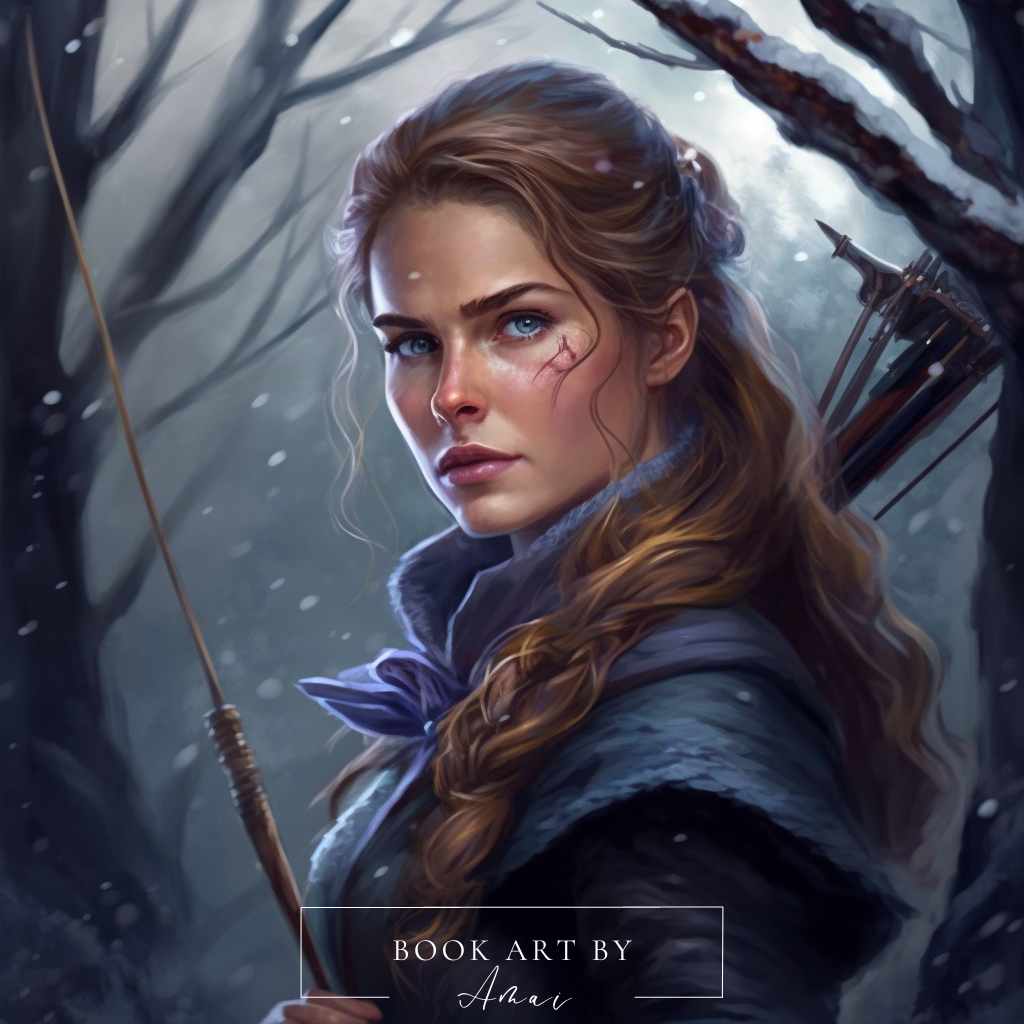
Book art by @BookArtbyAmai on Instagram
A Court of Thorns and Roses (ACOTAR) follows the “Beauty and the Beast” plot archetype, which is a variation of the “Transformation” or “Overcoming the Monster” archetype.
In this story structure, the protagonist is initially repulsed by or fearful of the “beast,” which is a misunderstood character with a hidden gentle side. As the protagonist spends more time with the beast, they develop a deeper understanding of each other, eventually leading to love and transformation.
Many argued that this was a boring plot with overused, cliche tropes and uneven pacing – but for the most part, the story manages to keep the reader engaged and hooked.
In fantasy, the first half of the book is usually slower and focused primarily on world-building and setting, while the second half is action-packed.
We can do A Court of Thrones and Roses plot analysis based on the Hero’s Journey by Joseph Campbell:
- Ordinary World: Feyre lives in a small village with her impoverished family, struggling to hunt and provide for them. This allows us to empathize and identify with the female lead.
- Call to Adventure: Feyre kills a wolf, which is a faerie in disguise. As retribution, Tamlin takes her away to his magical realm, Prythian. This is where many arguments arise – is it really suitable and believable that Tamlin takes Feyre to live a luxurious life as a punishment for killing his friend?
- Refusal of the Call: At first, Feyre resists her new life in Prythian and wants to return home to her family.
- Meeting the Mentor: As she spends more time in Prythian, Feyre meets various fae who help her understand the world, including Lucien, Tamlin’s emissary, and Alis, a servant.
- Crossing the Threshold: Feyre begins to accept her new life in Prythian, falling in love with Tamlin and learning about the curse that has befallen the realm.
- Tests, Allies, and Enemies: Feyre faces challenges, such as encountering a dangerous faerie called the Suriel and confronting Amarantha, the antagonist. She learns about the tasks she must complete to break the curse and save Tamlin and his people.
- Approach to the Inmost Cave: Feyre enters the heart of Amarantha’s stronghold, Under the Mountain, where she must face her trials.
- Ordeal: Feyre endures a series of life-threatening challenges set by Amarantha, testing her strength, cunning, and determination.
- Reward: Feyre successfully completes the trials, effectively breaking the curse and freeing the faeries of Prythian, including Tamlin.
- Resurrection: Feyre, on the verge of death, is brought back to life and transformed into a High Fae, signifying her rebirth and full acceptance of her new life in Prythian.
- Return with the Elixir: Feyre returns to the Spring Court as a High Fae, having grown as a person and found a new sense of purpose.
Theme
A central theme in A Court of Thorns and Roses is the power of love and its transformative potential. Throughout the novel, various forms of love — romantic, familial, and self-love — are explored, demonstrating the ability of love to heal, empower, and provide a sense of belonging.
Another prominent theme is the struggle for freedom and autonomy. The characters in the story, particularly Feyre, grapple with the constraints imposed upon them, whether by societal expectations, personal circumstances, or external forces.
Feyre’s journey represents an individual’s quest for self-determination and the ability to choose based on personal values and desires.
Love and struggle for autonomy are central themes of many Young and New Adult novels, which is why they are so popular with female readers.
Characters

Image Source: To Catch a Kit
The main characters we are introduced to besides Feyre are:
- Tamlin, a High Fae and the lord of the Spring Court, is initially depicted as a mysterious and powerful figure with a hidden vulnerability. As the story unfolds, his character becomes more complex, revealing his struggles with the weight of responsibility and the consequences of his actions.
- Lucien, Tamlin’s emissary and friend, is a witty and loyal companion who provides a contrast to Tamlin’s more serious demeanor. He supports Feyre throughout the story and plays a crucial role in the development of her character.
- Rhysand, the enigmatic High Fae of the Night Court, is a character who keeps his true intentions hidden. His actions and motivations are slowly revealed, making him a complex and intriguing figure in the narrative.
- Amarantha, the antagonist who swore revenge against humans and the fae who failed to protect her sister
Symbolism

Image source: Acrylipics
The wall separating the human realm from the Fae world is a symbol of the barriers that exist between different groups, both literally and metaphorically. It represents the fear and prejudice that can divide societies and perpetuate misunderstandings.
The masks worn by the Fae in the Spring Court symbolize how characters hide their true selves, whether to protect themselves from harm or maintain appearances.
Narrative style
A Court of Thorns and Roses is written in the first-person perspective from Feyre’s point of view. This narrative choice allows readers to experience the story intimately through Feyre’s thoughts, feelings, and perceptions.
Memorable quotes
“Pity those who don’t feel anything at all.”
- Ryshand to Feyre, page 414, chapter 46
“Don’t feel bad for one moment about doing what brings you joy.”
- Tamlin to Feyre, page 172, chapter 19
“I love you,” I said, and stabbed him.”
- Feyre, page 397, chapter 43
“I found him carefully studying me, his lips in a thin line. “Has anyone ever taken care of you?” he asked quietly.
“No.” I’d long since stopped feeling sorry for myself about it.”
- Tamlin and Feyre, page 110, chapter 12
The darker side
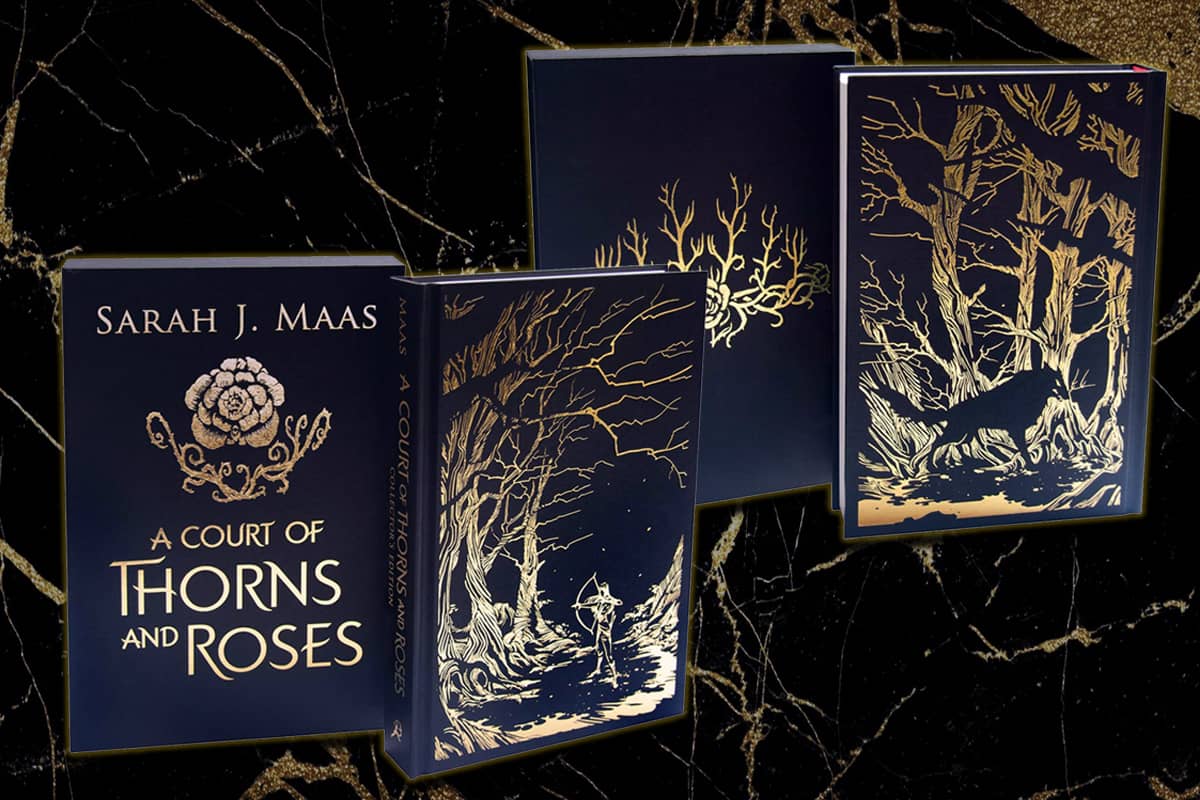
ACOTAR Collector’s Edition
Abuse of Thesaurus
Excessive use of uncommon or elaborate words can be perceived as an attempt to appear more sophisticated or artistic.
This can lead to a less engaging reading experience, as the flow of the narrative may be disrupted by overly complicated vocabulary. It is important for authors to maintain a balance between enriching their prose and ensuring that the text remains accessible and enjoyable for a wide range of readers.
Em dashes ( — )
Believe it or not, there are 1,830 Em dashes in ACOTAR.
Em dashes are used to indicate abrupt changes in thought, interruptions in dialogue, or to provide emphasis on a particular point. Overusing them disrupts the narrative flow and makes the text feel disjointed.
Some of these technical aspects of writing make me wonder, “Where was your editor?”
Weak antagonist
Amarantha was just not as well-developed or compelling as she could be.
Her motivations are rooted in her tragic past, but they are not sufficiently explored or nuanced to create a fully fleshed-out character.
To top it all off, Amarantha’s ultimate defeat came across as too easy or convenient, which completely diminishes her impact as a credible threat.
To strengthen her, Maas could’ve provided us with more insight into her motivations, background, and emotions, and create obstacles and challenges that forced the protagonist to grow and adapt.
Everything seems far too easy for Feyre
Challenges and resolutions come too easily for Feyre. This perceived ease affects the overall tension and stakes of the story, leading to a less engaging and thrilling experience.
For example:
- Feyre’s survival skills: She was a skilled huntress in the human realms, but now in the fae realms, her skills are still so impeccable that she manages to catch Surriel as if he was a rabbit.
- Overcoming challenges: While facing Amarantha, it just feels surreal that a young human girl was able to defeat hundreds of years old villain who held the whole Prythian under her thumb for decades. This just makes Amarantha seem cartoonish and unbelievable.
- Relationship development: Feyre’s relationships, particularly with Tamlin and Ryshand, develop too quickly and conveniently, making the connections feel less authentic or earned.
- Feyre’s transformation: At the end of the book, Feyre is transformed into a High Fae. Some readers may feel that this transformation occurs too suddenly or conveniently, resolving several of the story’s conflicts and setting the stage for the subsequent books in the series.
My honest thoughts

I loved the ACOTAR series, but this was my least favorite book in the series — the story gets much better regarding world-building, character development, and storytelling. I also want to note that Maas significantly drops the use of em dashes and ornate words throughout the books.
It’s also important to consider the book’s goal and target audience before judging it. ACOTAR was supposed to be an easy, impactful read for young female readers. And it was.
It would immediately become harder to read if it were to incorporate a more complex academic writing style and dwell deeper into the character’s psychology — we didn’t come here for Dostoyevsky.
ACOTAR doesn’t try to be Game of Thrones or Lord of the Rings — they are known for intricate world-building, expansive settings, complex political landscapes, slower pacing, and extensive descriptions.
No, it is an easily digestible and immersive story that allows you to dive right into it and escape reality with little brain power used.
There’s just the right amount of exposition, social commentary, and characterization to put you in Feyre’s mind and help you understand her emotions and sensations — which is important since we are reading the book from her perspective.
I was definitely bothered by how butchered Amarantha’s portrayal was, and there’s a lot of room for improvement. Amarantha served only as a catalyst for Feyre to completely get into the Fae world and get her character development. Hence why she should’ve been portrayed in a better way.
But the ending, sequels, and Ryshand make it a worthy read (P. S. Cassian is why I adore these books). 😍
Spicy chapters list
Let’s get it clear — A Court of Thrones and Roses was not erotic at all. It can barely be categorized as some sort of softcore erotica. It wasn’t overly romantic, either.
The only chapter with some spice is 27th, and in comparison to the sequels this is nothing.
If you came to read this book for the spice, you won’t get any.
But don’t worry, I’ve got you covered.
Fantasy books similar to ACOTAR but with more spice!
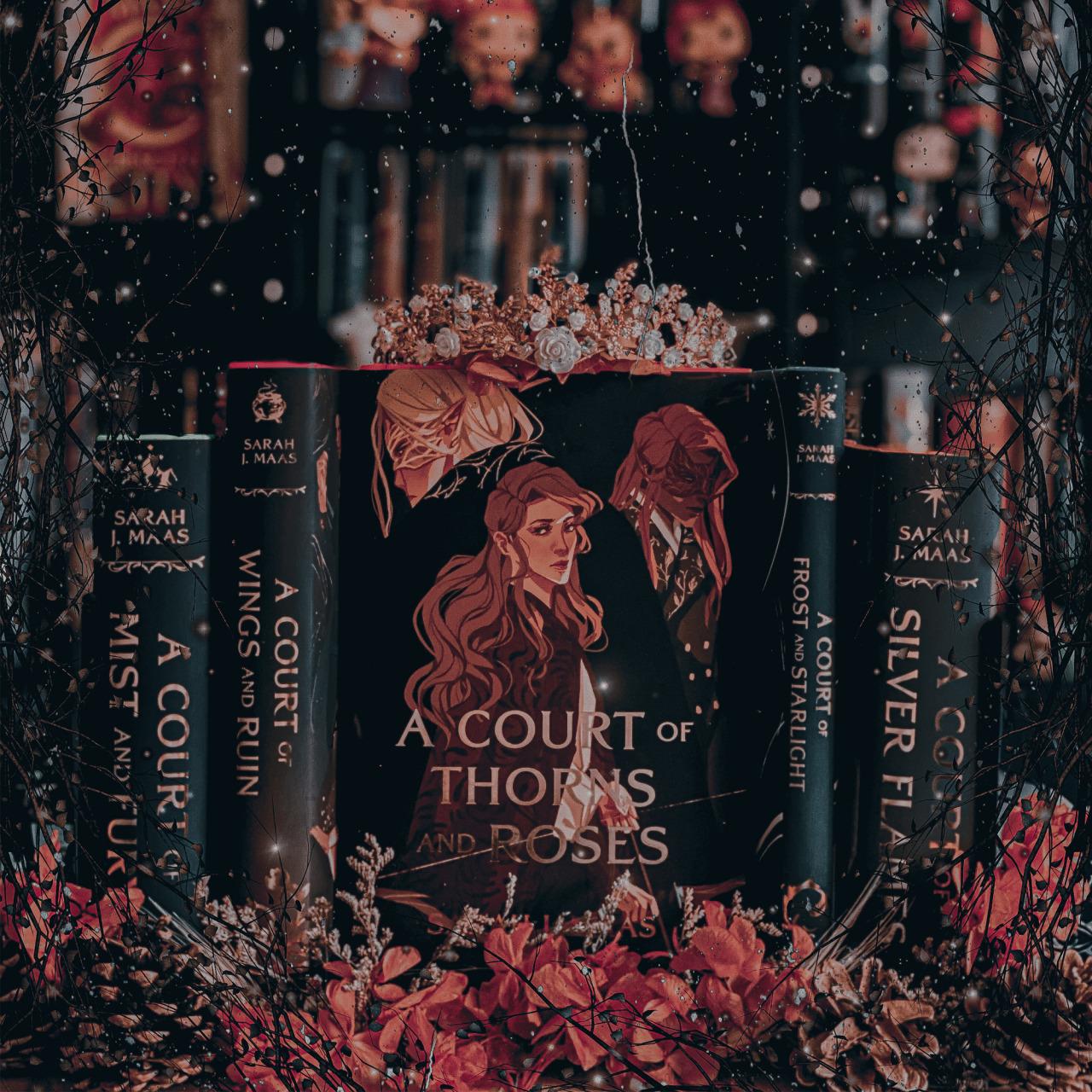
Image source: Elithien on Tumblr
If you want fantasy books with more sexual and adult content, consider exploring the following titles and series.
* These books are for 18+ audience:
- ACOTAR sequels: A Court of Mist and Fury (2nd book in ACOTAR series) and A Court of Silver Flames (4th book in the series) have intricate, extensive spicy parts that you would be thrilled to read if you fell in love with ACOTAR and its characters. The world-building, politics, and character development also take off from the 2nd book.
- Kushiel’s Dart (Kushiel’s Legacy series) by Jacqueline Carey: Lush and decadent fantasy filled with kinky, dark BDSM.
- Black Dagger Brotherhood series by J.R. Ward: Intense series packed with explicit sexual content following a group of vampire warriors who protect their race from a deadly enemy.
- The Serpent and the Wings of Night by Carissa Broadbent: Human girl is adopted by the vampire family, and to escape, she pledges allegiance to the ruthless enemy.
Books to read if you like ACOTAR
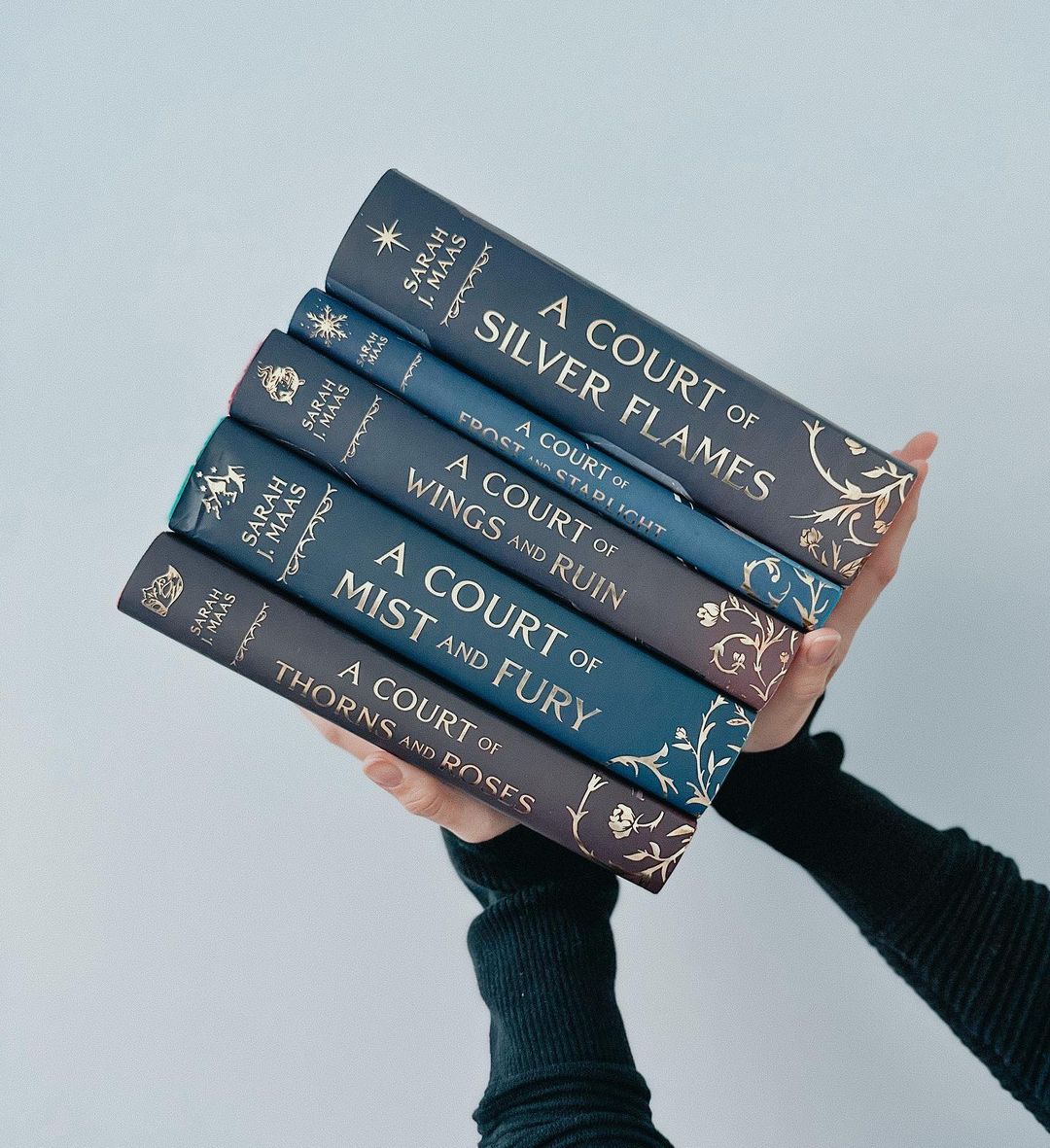
Image source: @old.enough.for.fairytales
If you’re looking for books similar to A Court of Thorns and Roses, here are some recommendations that fall within the young adult fantasy and romance categories:
- The Cruel Prince (The Folk of the Air series) by Holly Black: Human girl is born in fae realms and has to defeat the wicked prince, but she is in love with him.
- Crescent City series by Sarah J Maas: Bryce Quinlan, a half-Fae and half-human, seeks vengeance in a modern-day fantasy realm filled with magic, peril, and intense romance.
- House of Beating Wings by Olivia Wildenstein: FMC, a magicless halfling in the fae world hated by pure-blooded and loved by monsters, is given a prophecy that will make her the queen.
- Throne of Glass series by Sarah J. Maas: The world’s greatest assassin comes to the King to earn her freedom.
- The Shadows Between Us by Tricia Levenseller: FMC wants to seduce the king, kill him, and seize his kingdom, but falls in love with him instead.
- Serpent & Dove series by Shelby Mahurin: Witch is forced to marry a witch hunter.
- An Ember in the Ashes series by Sabaa Tahir: A slave and the best soldier unite to free Empire.
- The Wrath and the Dawn duology by Renée Ahdieh: One Thousand and One Nights enemies to lovers retelling.
FAQ
Is A Court of Thorns and Roses Smutty?
If you are looking for erotic, graphic, 50 Shades of Gray-like content, you won’t find it in this book. The only chapter with some sexual depiction is 27th. However, the series gets way spicier with the sequels.
And no, there aren’t any crazy kinky BDSM scenes, it is intense, romantic, and lustful, consensual intercourse.
Is A Court of Thorns and Roses YA?
No, due to some small portion of adult content and the overall theme of the series, A Court of Thrones and Roses is more NA and Adult.
How many books are in the ACOTAR series?
Currently, there are five books in the ACOTAR series, and it’s still unclear if there will be a 6th book.
Is the ACOTAR series finished?
On SJM’s website, the ACOTAR series is still listed as ongoing, and story-wise, there is still a lot of room left for new plot development and more characters to be explored.